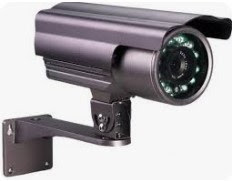Installing a Wi-Fi CCTV camera involves several steps to ensure proper setup and functionality. Here's a general guide:
i. Choose the
Location:
Select the areas you want to monitor and choose suitable locations for mounting
the cameras. Ensure they have a clear line of sight and are not obstructed by
obstacles.
ii. Check Wi-Fi
Signal:
Before installation, ensure that the selected locations have good Wi-Fi signal
strength. Weak signal can cause connectivity issues.
iii. Mounting: Install the camera mounts securely
using screws or adhesive, depending on the type of mount provided with your
camera. Make sure the mounting surface is stable and can support the weight of
the camera.
iv. Power Supply: Most Wi-Fi CCTV cameras are powered
by either batteries, AC power adapters, or Power over Ethernet (PoE). Follow
the manufacturer's instructions to connect the power source securely.
v. Connect to Wi-Fi: Power on the camera and follow the
instructions provided by the manufacturer to connect it to your Wi-Fi network.
Typically, this involves using a smartphone app or a web interface to scan for
available networks and enter the Wi-Fi credentials.
vi. Positioning and Alignment: Adjust
the camera angle and position to capture the desired area effectively. Ensure
the camera lens is not obstructed and provides the desired field of view.
vii. Configure
Settings:
Once the camera is connected to the WiFi network, configure its settings using
the manufacturer's app or web interface. This may include setting up motion
detection, adjusting video quality, enabling night vision, etc.
viii. Test: After configuring the settings,
perform a test to ensure that the camera is functioning correctly. Check the
live feed on your smartphone or computer to verify the video quality and
coverage.
ix. Secure
Installation:
Ensure that the cameras are securely mounted to prevent tampering or theft. Use
security screws or other antitamper measures if necessary.
x. Monitor and
Maintain:
Regularly monitor the camera feed to ensure it's working correctly. Clean the
camera lens periodically to maintain image quality, and check for any signs of
damage or malfunction.
xi. Optional: Cloud Storage or Local Storage:
Decide whether you want to store the footage locally on a DVR/NVR system or in
the cloud. Follow the manufacturer's instructions to set up storage options if
applicable.
iii. Review Legal Considerations:
Depending on your location, there may be legal considerations regarding CCTV
installation and usage. Ensure that you comply with privacy laws and
regulations.










0 Comments